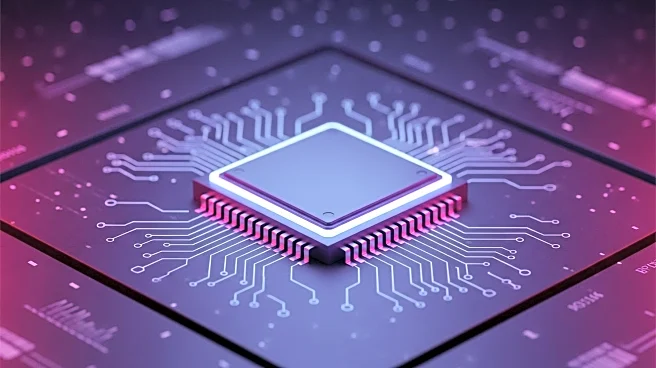What is the story about?
What's Happening?
Amal Clooney has recently undergone a significant change in her hairstyle, cutting off between six and eight inches of her long, thick hair. Her hairstylist, Dimitris Giannetos, described the new look as a 'power cut,' which includes a darker base shade of brown and face-framing pieces in a 'toasted almond' color. This change coincides with a major announcement from Clooney regarding her foundation. The Clooney Foundation for Justice, which she shares with her husband, is partnering with the Oxford Institute of Technology and Justice. This collaboration aims to democratize legal access for women and children by utilizing artificial intelligence.
Why It's Important?
Amal Clooney's haircut is not just a personal style choice but also marks a significant moment for her professional endeavors. The partnership between the Clooney Foundation for Justice and the Oxford Institute of Technology and Justice represents a substantial step towards improving legal access for marginalized groups. By harnessing AI, the initiative seeks to provide more equitable legal resources, potentially transforming the landscape of legal aid. This development highlights the intersection of technology and social justice, showcasing how innovative solutions can address longstanding societal issues.
What's Next?
The partnership between the Clooney Foundation for Justice and the Oxford Institute of Technology and Justice is expected to lead to the development of new tools and resources that leverage AI for legal aid. As this initiative progresses, it may inspire other organizations to explore similar collaborations, potentially leading to broader changes in how legal services are provided. Stakeholders in the legal and technology sectors will likely monitor the outcomes of this partnership closely, assessing its impact on access to justice and the role of AI in legal processes.
Beyond the Headlines
The collaboration between Amal Clooney's foundation and the Oxford Institute of Technology and Justice could have far-reaching implications beyond immediate legal access improvements. It may set a precedent for how technology can be integrated into social justice efforts, encouraging other foundations and institutions to consider similar approaches. Additionally, this partnership could spark discussions on the ethical use of AI in legal contexts, prompting further exploration of how technology can be used responsibly to support vulnerable populations.
AI Generated Content
Do you find this article useful?













